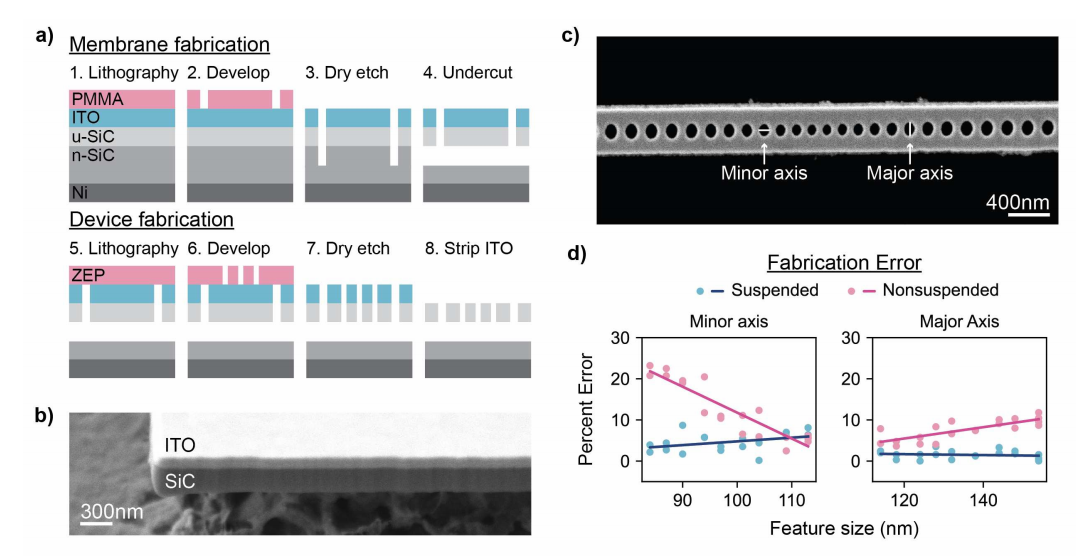
This paper presents a novel fabrication approach for suspended 4H-Silicon Carbide (SiC) membranes, enabling the integration of defects into quantum devices. The method is particularly useful for creating high-quality photonic and phononic devices essential for quantum technologies. Key aspects of the study include:
Fabrication Technique: The authors developed a new process where suspended 4H-SiC thin films are first synthesized from a monolithic platform, after which devices are patterned onto these membranes. This method avoids the need for wafer bonding or chemical polishing and provides greater flexibility in device fabrication.
1D Photonic Crystal Cavities: The paper demonstrates the fabrication of 1D photonic crystal (PhC) cavities on suspended membranes. These cavities are essential for integrating quantum defects, enhancing zero-phonon line (ZPL) emission, and supporting quantum computing applications. The quality factors (Q factors) of these cavities were measured to be in the range of a few thousand, comparable to other reported SiC-based PhC cavities.
Tapered Waveguide Coupling: The authors also explore the integration of tapered waveguide-coupled cavities, improving the efficiency of light collection, which is crucial for quantum information processing. They report the first successful demonstration of tapered waveguide cavities in 4H-SiC.
Acoustic Resonators: The study further explores the integration of lithium niobate (TFLN) with suspended SiC membranes to create acoustic resonators. These resonators enable spin-phonon interactions, which are key for controlling color centers in SiC and enhancing readout efficiency via piezoelectric transduction.
Robustness and Scalability: The proposed fabrication technique offers advantages in terms of robustness to high-temperature processes and compatibility with heterogeneous materials. It also enables scalable fabrication for future quantum devices, including those requiring high-temperature annealing for dopant activation.
Overall, the paper presents a significant advancement in the development of quantum devices using 4H-SiC membranes, with potential applications in quantum networking, spin-state readout, and defect integration. The combination of photonic and phononic components within a monolithic platform allows for the creation of more efficient, scalable, and robust devices.
OMeda (Shanghai Omedasemi Co.,Ltd) was founded in 2021 by 3 doctors with more than 10 years of experience in nanpfabrication. It currently has 15 employees and has rich experience in nanofabrication (coating, lithography, etching, two-photon printing, bonding) and other processes. We support nanofabrication of 4/6/8-inch wafers.